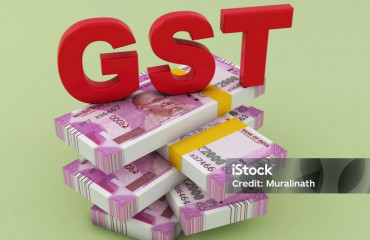As India commemorates eight years of GST, the business community is increasingly vocal about the need for reforms that enhance working capital efficiency. Reflecting on this, Deloitte's GST@8 survey, which gathered insights from over 960 senior executives across eight industries, reveals a noticeably positive sentiment compared with previous years. While confidence in the GST regime has grown significantly from 59 percent in 2022 to 85 percent in 2025, there is a strong demand for targeted changes to unlock liquidity and streamline tax credit mechanisms.
GST has brought several benefits through streamlined tax rates and tech-led compliance processes; however, the issue of blocked working capital remains a concern to businesses. Working capital efficiency is affected due to unutilised Input Tax Credit (ITC) on account of credit accumulations because of capital investments, inverted duty structure and procedural complexities in the refund mechanism.
Improving ITC fungibility to ease the financial burden
Another area requiring reform is the restriction on using ITC for GST liability payable under the Reverse Charge Mechanism (RCM). The concept of RCM is not unique to India; it has been adopted in other countries as well, where tax authorities permit discharge of RCM liability using available ITC, without mandating cash outflow. The requirement of discharging GST liability in cash leads to working capital strain, especially for service sectors in which the import of services is frequently undertaken. Allowing the use of ITC to offset RCM liabilities would be entirely revenue-neutral for the government but could significantly ease working capital pressures across industries.
Reforming refund rules to unlock ITC liquidity
Additional liquidity could be released by allowing a refund of ITC on the purchase of capital goods and input services under the refund mechanisms in cases of inverted duty structure. Capital-intensive industries, which incur substantial upfront expenditures, would be able to unlock additional funds to optimise operational spending. Along similar lines, the refund of ITC accumulated on account of the purchase of capital goods for export-oriented businesses would present another avenue to release blocked funds.
Another alternative to unlocking working capital for businesses would be to enable year-end refunds of ITC accumulated during the year. Under the present framework, refunds are confined to cases involving inverted duty structures or export businesses.
Simplifying the framework for seamless adjustments
Currently, businesses face issues when issuing credit notes, particularly in post-supply discounts. The trading, retail and life sciences sectors issue credit notes based on volume-based discounts, performance-linked incentives, festive price drops, etc. Simplification of GST credit note provisions will be a welcome step and can improve liquidity cycles.
Except for certain rulings, under the current GST framework, taxpayers are required to discharge pre-deposits in cash at the time of filing appeals. While relaxations were previously introduced on the quantum of amounts required to be deposited, discharge of these obligations in cash brings an unwarranted constraint on the cash flow cycles, especially for MSMEs. Like the provision under the current GST law allowing bank guarantees as an alternative for the provisional release of detained vehicles, the discharge of pre-deposit obligations using bank guarantees or bonds instead of cash could be allowed, easing the working capital pressure on businesses.
Looking ahead: GST 2.0 and global benchmarks
As India's GST ecosystem matures, unlocking the value embedded in accumulated ITC must become an operational priority by adopting global best practices. Addressing the challenges faced by businesses with multi-state operations, input-intensive procurement chains, voluminous exempt supplies or an inverted duty structure would enormously help them gain operational agility and scalability.
As the government seeks to foster ease of doing business, reforming the ITC framework can deliver high-impact gains to bridge the gap to becoming a US$5 trillion economy.

